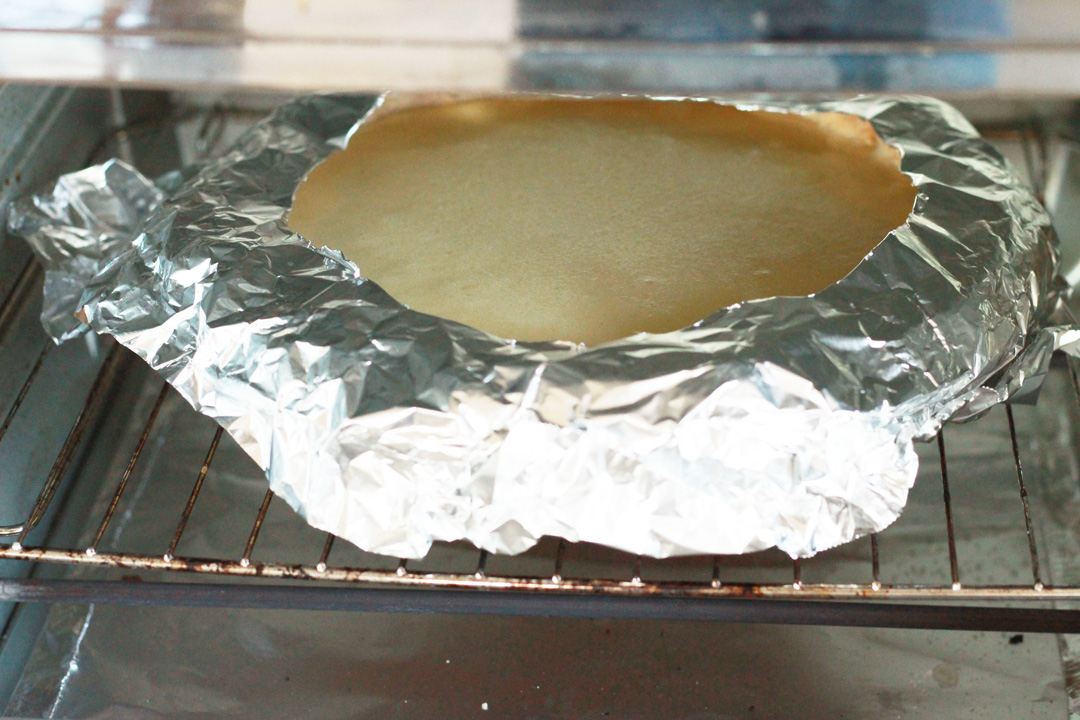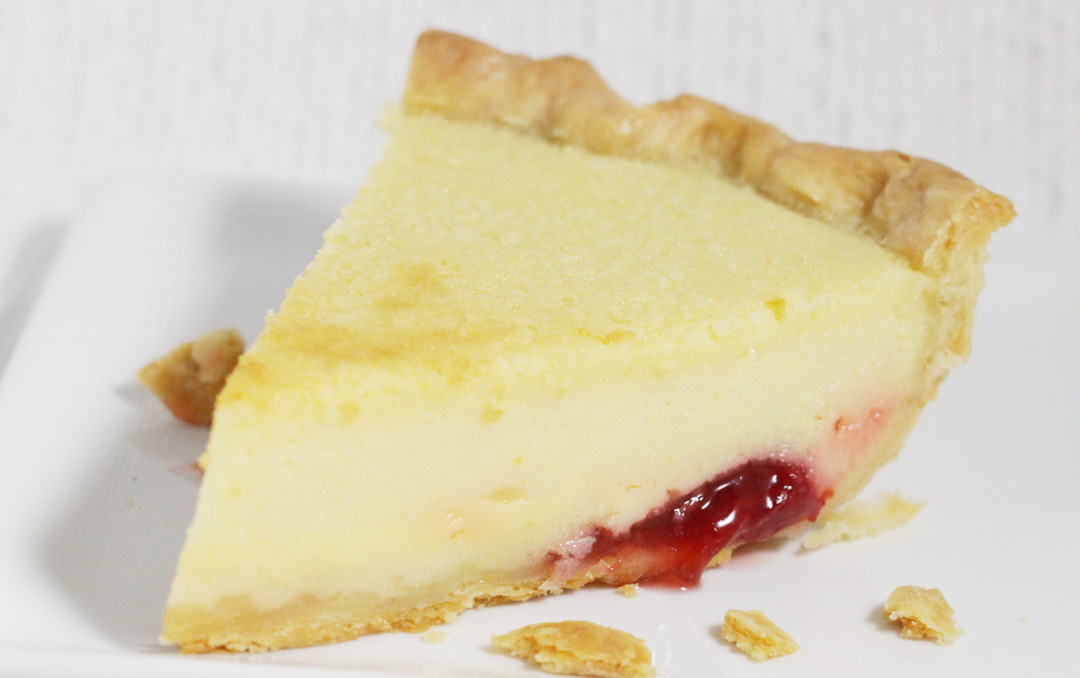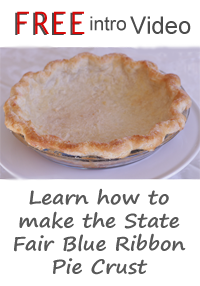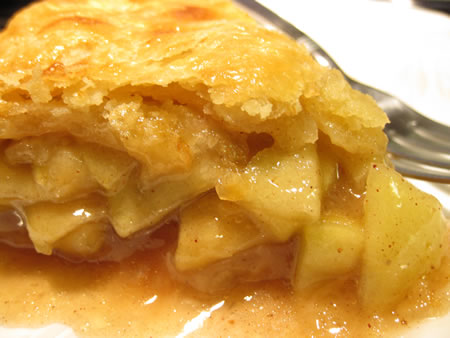Buttermilk Pie in Desperation!
Buttermilk pie, vinegar pie, mock apple pie—where the filling of these pies, rather than being composed of seasonal fruit, is made of mashed up and seasoned crackers—are known as “desperation”, or “make-do” pies.
Later on, I discovered these pies were also called “Depression Era Desserts” of the 1930s. These pies were made by moms who knew how to be frugal and still enjoy the delight of baking delicious treats for the whole family.
They’ve been part of the American culinary tradition since the beginning of the country when resourceful farming families put together dessert with whatever they had on hand. And now, desperation pies are rising in popularity. Jump to recipe …
Buttermilk Pie with Cherry Compote: Timelapse Video
Buttermilk Pie History
“They think it came across the prairies in covered wagons, similar to the Amish milk pie [a confection made of molasses, milk, and eggs that tastes like a custardy sugar cookie]”. “The legend goes that farm wives loved the recipe so much because of what little time it took to make. They’d be out in the fields working, run back inside and mix all the ingredients in a dish, and then go back to the fields.”
A time-honored delicacy in southern American states along the Mason-Dixon line, Texans claim to be particularly fond of buttermilk pie. Their reasoning — and the reasoning of folks from other states with a lack of local fruit growers — is that buttermilk pie is a sweet alternative to fruit pie when fruit isn’t always readily available. Many people, however, do add fruit or other flavors to their buttermilk pies.
Famed chefs and at-home chefs, alike, make chocolate and caramel buttermilk pies, as well as fruit-topped buttermilk pies. The traditional recipe does not call for vanilla or lemon zest, though such ingredients are often added to the pie in the 21st century.
Buttermilk – what is it?
Simply put, it’s the liquid that is leftover after churning butter (a low-fat and high-protein substance that ferments to the point of tartness).
Old-fashioned homemade buttermilk is the slightly sour, residual liquid which remains after butter is churned.
It is usually flecked with tiny spots of sweet, creamy butter that did not quite make it to the top to be skimmed. The liquid is left to ferment overnight, which converts the milk sugars into lactic acid. The lactic acid is what makes buttermilk so desirable for baking, and what gives it a tangy flavor.
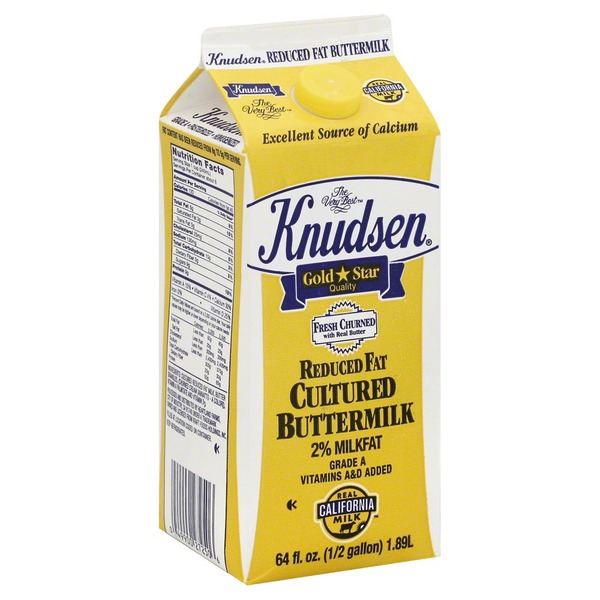
In the old days, buttermilk was simply the liquid left behind after the cream was churned into butter. As unpasteurized cream sat “ripening” for a few days before churning, naturally occurring bacteria caused it to ferment by converting milk sugars into lactic acid, which made the resulting buttermilk mildly sour and slightly thickened.
But since virtually all milk and cream are now pasteurized at high temperatures, a process that kills off those bacteria, most buttermilk sold today is cultured buttermilk, made by reintroducing lactic-acid bacteria to pasteurized skim or low-fat milk. Often, it’s also reinforced with salt and thickeners like carrageenan and starch.
Buttermilk Pie Recipe
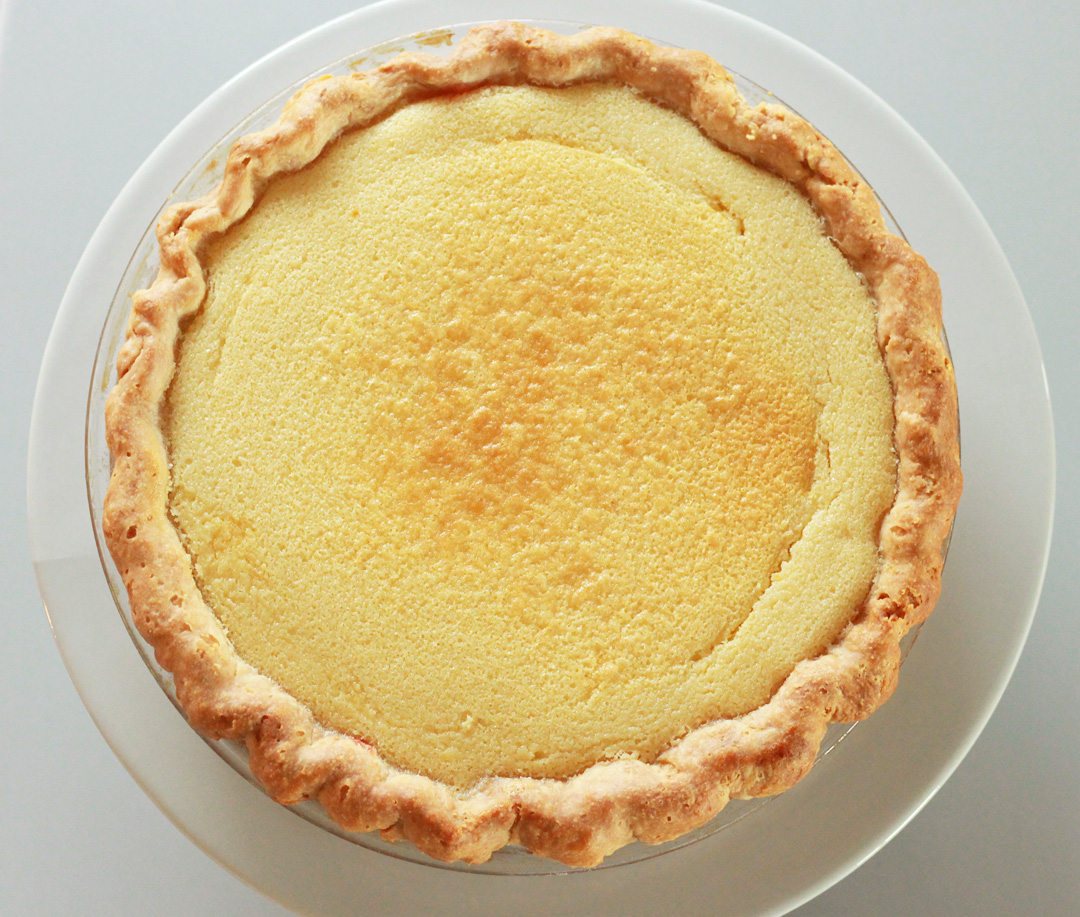
Ingredients for one 9-inch pie
One Pie Crust
Filling
- 2 cups buttermilk
- 1/2 cup half-and-half milk
- 3 eggs
- 1 egg yolk
- 1 cup white sugar
- 2 tablespoons all-purpose flour
- 2 tablespoon unsalted melted butter
- 1 teaspoon pure vanilla extract
- 1/4 teaspoon fresh ground nutmeg
- 1/8 teaspoon salt
- 2 tablespoons fresh orange juice
- 1/2 teaspoon fresh orange zest
Fruit Compote
- 1/2 cup fruit pie filling (suggestion: cherry or strawberry)
- 2 tablespoons sugar
- 1 teaspoon Clear Gel or cornstarch
Crust Glaze
- 2 tablespoons half-and-half or cream for wash
Crust Directions:
- Prepare the pastry: Roll the pastry and line a 9-inch pie plate with the pastry.
- Flute or crimp edges.
- Lined with foil and fill with pie weights.
- Blind bake at 375 F for 18 to 25 minutes until golden and cool.
Filling Directions:
- Mix half of the sugar with the eggs until creamy.
- Mix the rest of the sugar with flour, nutmeg, and salt in a small bowl.
- Slowly incorporate the dry ingredients into the egg mixture. Making sure not to form lumps.
- Combine in the orange juice and zest. Mix well.
- Now add your vanilla, buttermilk, half-n-half, and melted butter to the mixture.
- Brush pie edges with cream or some half-n-half.
- Fruit Compote: Combine fruit with juice, clear gel and sugar in small glass bowl. Microwave for about 30 secs until it thickens like jam.
- Spread compote on the bottom of pie crust. However, don’t completely cover the bottom. You want to leave some bare spots so the custard has something to anchor to.
- Gingerly pour the buttermilk mixture over the compote. Pour over a large spoon to soften the impact. The filling should completely cover the compote.
- Bake 350 for 15 minutes. Remove and cover pie edges with foil or use a pie crust shield.
- Return to oven, bake for another 20 to 30 minutes until the center is set.
- Transfer the pie to cool. And eat!
Buttermilk Pie Success Tip
To keep the edges from burning early in the baking process, cover with foil. Bake the filling low and slow, low heat and more time in the oven to keep the pie from darkening for a better presentation.
